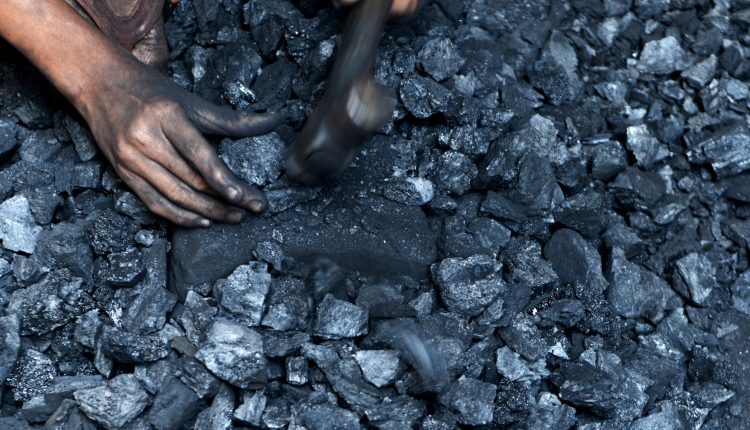
Coal workers' pneumoconiosis and Caplan's syndrome
Coal worker’s pneumoconiosis is a disease characterized by diffuse nodular deposition of dust in the lungs following prolonged exposure to bituminous or anthracitic coal dust in the coal mining industry
We remind you that the term “pneumoconiosis” indicates a lung pathology caused by the inhalation of dust, for example at work and in fact coal workers’ pneumoconiosis is a typical occupational respiratory disease.
Coal Workers’ Pneumoconiosis (CWP) is also called coal miner’s pneumoconiosis, black lung disease, or anthracosis.
Pathologic anatomy and pathophysiology of coal workers’ pneumoconiosis (CWP)
In simple CWP, carbon dust is diffusely deposited throughout the lungs, resulting in the development of “coal spots” around the respiratory bronchioles.
Subsequently, a slight dilatation known as focal dust emphysema also arises; however, it does not extend to the alveoli and is not associated with airway obstruction.
Since coal has little fibrogenic power, only minimal disruption of the pulmonary architecture and modest functional impairment are found.
However, approximately 1-2% of miners with simple CWP each year develop Progressive Massive Fibrosis (PMF), also known as complicated CWP, defined by the development of a 1 cm diameter opacity in the presence of a simple CWP.
Only rarely does PMF occur after exposure has ceased and can progress even without further exposure.
As an amorphous black mass, PMF (as in complicated silicosis) invades and destroys blood vessels and airways.
The evolution towards a PMF is not usually related to the amount of silica contained in the coal; however, antinuclear and antilung antibodies may be found in the serum of affected individuals, as occurs in silicosis.
Caplan syndrome
A coal miner who has or develops RA can produce multiple round nodules in the lungs in a relatively short time.
Such nodules sometimes develop in the absence of simple CWP.
Histologically, they resemble rheumatoid nodules but have a more acute peripheral zone of inflammation.
These nodules represent an immunopathological response related to rheumatic diathesis.
Symptoms, signs, and diagnosis of coal workers’ pneumoconiosis (CWP)
Simple CWP is not associated with any respiratory symptoms.
There are a few mild abnormalities in inspired gas distribution, but these are not associated with symptoms.
Cough and sputum are present but no more often than when chest x-rays are normal.
If present, airway obstruction, sometimes with exertional dyspnea, is due to concomitant smoking-induced pulmonary emphysema, industrial bronchitis, or the presence of PMF, the only disabling form of CWP.
Diagnosis is based on a history of significant exposure, which is currently at least 20 years of underground work, and characteristic radiological findings of small rounded opacities in both lungs for simple CWP, or a shadow > 1 diameter cm, on a background finding of a simple CWP, for PMF.
Prophylaxis and therapy
CWP can be prevented by eliminating dust on the face.
The therapy is non-specific, rarely necessary, in most cases useless, however similar to that of non-specific chronic obstructive airway disease.
Many patients are unnecessarily given bronchodilators, often to their detriment.
Other occupational respiratory diseases
Other frequent occupational respiratory diseases that may interest you are:
- silicosis;
- asbestosis and related diseases (mesothelioma and pleural effusion);
- berylliosis;
- hypersensitivity pneumonitis;
- occupational asthma;
- byssinosis;
- diseases from irritant gases and other chemicals;
- sick building syndrome.
Read Also
Emergency Live Even More…Live: Download The New Free App Of Your Newspaper For IOS And Android
Symptoms Of Asthma Attack And First Aid To Sufferers
Occupational Asthma: Causes, Symptoms, Diagnosis And Treatment
Bronchial Asthma: Symptoms And Treatment
Bronchitis: Symptoms And Treatment
Bronchiolitis: Symptoms, Diagnosis, Treatment
Extrinsic, Intrinsic, Occupational, Stable Bronchial Asthma: Causes, Symptoms, Treatment
Chest Pain In Children: How To Assess It, What Causes It
Bronchoscopy: Ambu Set New Standards For Single-Use Endoscope
What Is Chronic Obstructive Pulmonary Disease (COPD)?
Respiratory Syncytial Virus (RSV): How We Protect Our Children
Respiratory Syncytial Virus (RSV), 5 Tips For Parents
Infants’ Syncytial Virus, Italian Paediatricians: ‘Gone With Covid, But It Will Come Back’
Respiratory Syncytial Virus: A Potential Role For Ibuprofen In Older Adults’ Immunity To RSV
Neonatal Respiratory Distress: Factors To Take Into Account
Stress And Distress During Pregnancy: How To Protect Both Mother And Child
Respiratory Distress: What Are The Signs Of Respiratory Distress In Newborns?
Respiratory Distress Syndrome (ARDS): Therapy, Mechanical Ventilation, Monitoring
Bronchiolitis: Symptoms, Diagnosis, Treatment
Chest Pain In Children: How To Assess It, What Causes It
Bronchoscopy: Ambu Set New Standards For Single-Use Endoscope
Bronchiolitis In Paediatric Age: The Respiratory Syncytial Virus (VRS)
Pulmonary Emphysema: Causes, Symptoms, Diagnosis, Tests, Treatment
Bronchiolitis In Infants: Symptoms
Fluids And Electrolytes, Acid-Base Balance: An Overview
Ventilatory Failure (Hypercapnia): Causes, Symptoms, Diagnosis, Treatment
What Is Hypercapnia And How Does It Affect Patient Intervention?
Colour Changes In The Urine: When To Consult A Doctor
The Colour Of Pee: What Does Urine Tell Us About Our Health?
First Aid For Dehydration: Knowing How To Respond To A Situation Not Necessarily Related To The Heat
How To Choose And Use A Pulse Oximeter?
Alterations In Acid-Base Balance: Respiratory And Metabolic Acidosis And Alkalosis



